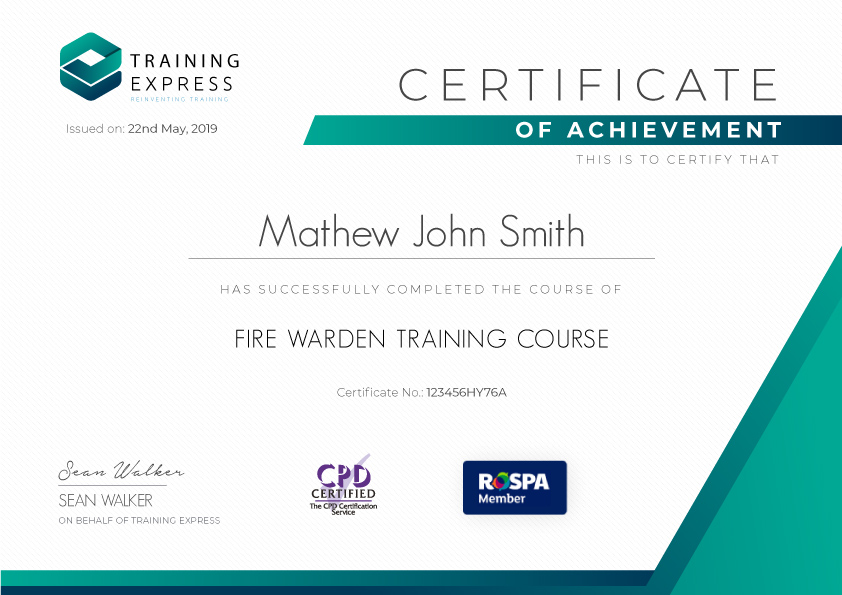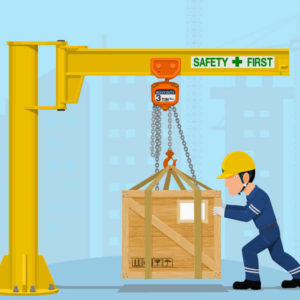Description
Get the Health & Safety Compliance bundle at an unbeatable price and equip yourself with the required skills to get a standalone position at your workplace. These award-winning and CPD accredited best-selling courses will not only help you accelerate your career in the relevant sector but also gain some practical and useful skills useful in emergencies.
- Accredited by CPD
- RoSPA approved
- Instant e-certificate and hard copy dispatch by next working day
- Fully online, interactive course with audio voiceover
- Developed by qualified health and safety professionals
- Self paced learning and laptop, tablet, smartphone friendly
- 24/7 Learning Assistance
- Discounts on bulk purchases
The following 5 courses are included in this bundle:
Workplace First Aid Training
This introductory first aid training course provides step-by-step training on how to react accordingly to a casualty, perform CPR, treat wounds, and much more. You will familiarise yourself with the first aid tool kit, and explore the fundamentals of first aid management in the workplace.
Manual Handling Training
Learn how to perform manual handling correctly with perfect form, with the Manual Handling Training course. In this comprehensive training course, you will explore the safety risks involved in manual handling, how to work in compliance with MHOR and how to mitigate potential workplace hazards.
Fire Safety Training
Be prepared in the case of an emergency and gain the skills and knowledge to identify hazards in the workplace with the Fire Safety Training Course. In this course, you will learn about the types of fires, how to extinguish a fire, and evacuation procedures.
Asbestos Awareness Training
This awareness course will give you a full understanding of the uses of Asbestos and the risks it still maintains. This course will prepare you for identifying, spotting, and preventing exposure to asbestos and when to call an emergency or the authorities.
Fire Warden Training Course
The fire warden course will inform and teach you the fire safety legislation along with the roles and responsibilities that a fire warden has during a fire drill, an evacuation, or a genuine emergency.
Learning Outcomes
By the end of the course, learners will be able to demonstrate that they;
- Demonstrate awareness of the health & safety hazards of working at height
- Understand the legal requirements of employers and employees under HSE law
- Have a solid understanding of UK legislation for working in confined spaces
- Explore the most common causes of falls from height and prevention measures
- Be familiar with UK fire safety regulations, equipment, and evacuation procedures
- Identify the different forms of manual handling and the risks involved
- Get step-by-step guidance on how to conduct an advanced risk assessment
- Learn how to perform CPR and take control of emergencies in the workplace
- Familiarise with the different types of personal protection equipment (PPE)
- Learn how to create an effective workplace emergency plan
Who should take the course
This bundle course is the complete package training certification for those who wish to develop their understanding of workplace health and safety laws and procedures in the UK. The training applies to professionals in all sectors, including, the following roles:
- Fire Warden/Marshals
- Construction Workers
- Electricians
- Office Managers
- Store Managers
- HR professionals
- Teachers
Certification
Once you’ve successfully completed your course, you will immediately be sent a digital certificate. Also, you can have your printed certificate delivered by post (shipping cost £3.99). All of our courses are fully accredited, providing you with up-to-date skills and knowledge and helping you to become more competent and effective in your chosen field. Our certifications have no expiry dates, although we do recommend that you renew them every 12 months.

Assessment
At the end of the course, there will be an online assessment, which you will need to pass to complete the course. Answers are marked instantly and automatically, allowing you to know straight away whether you have passed. If you haven’t, there’s no limit on the number of times you can take the final exam. All this is included in the one-time fee you paid for the course itself.
Course Curriculum for Workplace First Aid Training
Module One introduces the basic principles of First Aid in the workplace and the important responsibilities that a First-Aider must own. It also looks at the requirements of a good First Aid kit and the importance of preventing cross-infection. It also provides a pointer towards initial actions to take when an emergency is encountered.
In Module Two, we explain the legal duties of an employer (and employee) has in regards to providing First Aid equipment and facilities. It also covers the UK legislation that is currently in place, to ensure that the appropriate workers are trained in First Aid skills, along with further health and safety directives. The importance of accident reporting is examined as well.
In Module Three, we look at the way in which First Aid personnel should take charge during incidents and guide events. This naturally leads to the recommended actions to take during an emergency, where they will be influential in conducting safety during accidents involving fire, electricity, and water. This module also emphasises the need for self-safety as a First-Aider.
In Module Four, we look at the importance of a Primary Survey during an incident. It emphasises the importance of recording and understanding all the information that can be taken from the casualty and the incident. The module also instructs the way a Recovery Position can be applied to a patient.
Module Five explains the purpose of a Secondary Survey and why it may not always be necessary. It covers the benefits of a more protracted examination and detailed investigation into an incident. We explain the procedural steps of the survey and just how much it can influence the treatment of the casualty.
Module Six comprehensively describes the most commonly used First Aid techniques. We cover the “Chain of Survival”, and the key recommendations in an emergency. The components of a First Aid kit are also explored, with descriptions of how to apply dressings, bandages, and slings. The life-extending procedures involving CPR and AEDs are highlighted as well.
Module Seven describes the majority of minor injuries that a First-Aider can expect to encounter. It looks at the wide variety of common ailments and wounds that can occur easily, and how best to deal with them. The module also highlights the injuries that can escalate in severity and what to do to ensure the safety of the casualty.
Module Eight starts to cover the Secondary Illnesses that a First-Aider can come across. This module specifically explains the actions required when an adult, child, or baby becomes unconscious. It also goes into detail on how to check for breathing problems and apply resuscitation techniques.
Module Nine continues the theme of treating Secondary illness in a casualty. This module covers the conditions that can cause severe breathing difficulties in an individual, how they should be appropriately treated, and when emergency services should become involved.
Module Ten continues to look at Secondary Injuries that arise from long-time medical conditions or injuries. This covers a range of issues from complications caused by excessive bleeding, to the effects of Epilepsy, and the causes of Heart Attacks. The module also covers the different types of diabetes, and what causes the body to go into shock.
Module Eleven comprehensibly covers the different types of fractures and dislocations. It looks at the different ways bones can break or splinter, along with the appropriate treatment a First-Aider can perform. We also cover the risks behind head injuries and how bone displacement should be handled.
Module Twelve covers and summarises the different types of emergency services that are available in the UK. This final module will affirm the responsibilities of a First-Aider and instructs the learner on how and when to call the appropriate services.
Course Curriculum for Manual Handling Training
In module one, we get the ball rolling by defining what we mean by manual handling. We discuss different ways that we may handle items manually in the workplace and what tasks fall into the umbrella of ‘manual handling’. We also take a look at what risks are associated with manual handling. Along with why there’s such a ‘fuss’ about this issue. Finally, we take a look at the surprisingly easy to understand legislation surrounding manual handling and what authorities are in place to help you stay safe in your workplace.
Module two starts to become more specific, and in this module, the focus of our attention is what types of injuries we might experience as a result of manual handling. We also look at why it’s so important to be able to notice these injuries in yourself or others.
In this module, which is another focused module, we take a look at risk assessments in depth. The learner will discover the critical role that risk assessments play not just in managing health and safety risks but in managing all risks.
A big part of risk management is to control and reduce the risks involved, and this is the focus of this module. We learn systems for reducing and controlling risk. What to do in some everyday situations and ways that we may manage the risk such as using Personal Protective Equipment, and practising safe manual handling protocols.
In the final module, we take a more in-depth look into many of the techniques used to help the learner to practice manual handling safely. We will focus on each different type of lift you may need to do in the workplace and give you a step by step guide on how to handle that load safely.
Course Curriculum for Fire Safety Training
This introductory module will get a kick-start by defining the importance of fire safety. In this module, we’ll discuss the fire triangle, potentially dangerous ignition, fuel, and oxygen sources, and different types of fires with the examples of their potential sources. We’ll conclude this first module with the discussion on the roles and duties of the first responsible person, fire warden, and employees’ duties.
Fire safety legislation will be the central highlighted part of this second module. Throughout this module, you’ll be introduced with the essential criteria’s to meet the fire safety law requirements. You’ll also get to know about the main steps and key considerations of risk assessments and the step-by-step briefing of conducting the risk assessment. Finally, a brief discussion on daily or weekly risk assessments and fire safety enforcement will take place in this very module.
A module dedicated to various fire safety measures. Housekeeping, fire detection and warning systems and specific issues will be highlighted in this module. Learners will also get a solid understanding of different types of fire extinguishers and fire safety arrangements.
This final module is going to give learners an in-depth overview of the fire evacuation procedures. Different strategies of fire evacuation procedures, personal emergency evacuation plans (PEEP), and a brief description of fire drills will be discussed in this fourth module.
Course Curriculum for Asbestos Awareness Training
Module one takes a look at the history of Asbestos, and why it was used so much in the UK building industry. It also examines the natural properties of the substance and the types in use in the UK. There is also an overview of the risks of the material and when/why it was banned in Great Britain.
In Module two, we go into ways you can identify Asbestos and ACM in properties, what condition it may be in, and how dangerous it may be.
In Module Three, we look at the way current UK law covers the usage and discovery of Asbestos materials. As well as looking at the way laws and legislation protect employees, the course explains why Asbestos is still a risk today after many years of being banned.
In Module Four, we look at the way current UK law covers the usage and discovery of Asbestos materials. As well as looking at the way laws and legislation protect employees, the course explains why Asbestos is still a risk today after many years of being banned.
Module Five covers the procedures involved for Asbestos Surveys, and what the benefits are. We also speak about ways of finding reputable surveyors and highlighting the level of risks in a property.
Module Six describes the many ways which are available to employers and homeowners to mitigate any risk from discovered (or undiscovered). It also covers the obligations that both employers and employees have for the well-being of all workers.
Module Seven describes the way in which potentially hazardous Asbestos waste can be safely handled and disposed of. We also look at who is legally obliged to do this, and who enforces the regulations and licensing of the practice.
Module Eight will teach the methods of dealing with accidental or unexpected exposure from Asbestos. It covers what to do in an emergency and how to aid Emergency Services in the event of Asbestos discovery.
Course Curriculum for Fire Warden Training Course
In this beginning module, we’ll start with the goals and aims and the importance of fire safety. Later on, we’ll go deep into the fire safety law and learn about the DSEAR and the duties of the first and second responsible person. The module will come to an end with the number and responsibilities of fire wardens and their training specifics.
This module will roll on by introducing you with the potentially dangerous ignition, fuel, and oxygen sources. Before wrapping up with the various fire tools, this module will focus on the different types of fires and their potential sources.
In module 3, the learning will start with the main steps and key considerations of risk assessment. You’ll then walk through the details of the stages of risk assessment. The curtain of this third module will be drawn by talking about daily/ weekly risk assessments and the overview checklist.
As the name suggests, the fire plan and safety arrangements will take centre stage of this module 4. It will roll on by discussing the topics like fire prevention, the fire evacuation plan, fire safety arrangements and fire warden’s role in it, housekeeping, etc. Fire detection warning systems, emergency routes and exits, and fire safety signs will also get a detailed explanation in this module.
This short module will discuss the various strategies of fire evacuation procedures. After shedding light on the five main strategies of evacuating staff, module 5 will proceed to discuss the steps of a fire warden’s role in fire evacuation. Finally, you’ll come to know about the importance and measures of fire drills.
This final module is also a short one and based on the personal emergency evacuation plans (PEEP). An introduction to PEEP, who may need PEEP, and what should a PEEP contain will be discussed briefly in module 6 to give you a proper understanding of PEEP or, personal emergency evacuation plans.
 Food Hygiene
Food Hygiene Health & Safety
Health & Safety Safeguarding
Safeguarding First Aid
First Aid Business Skills
Business Skills Personal Development
Personal Development





